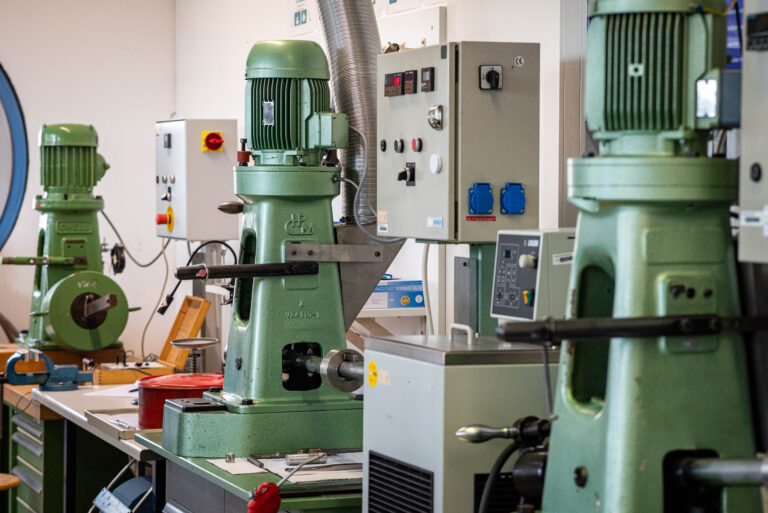
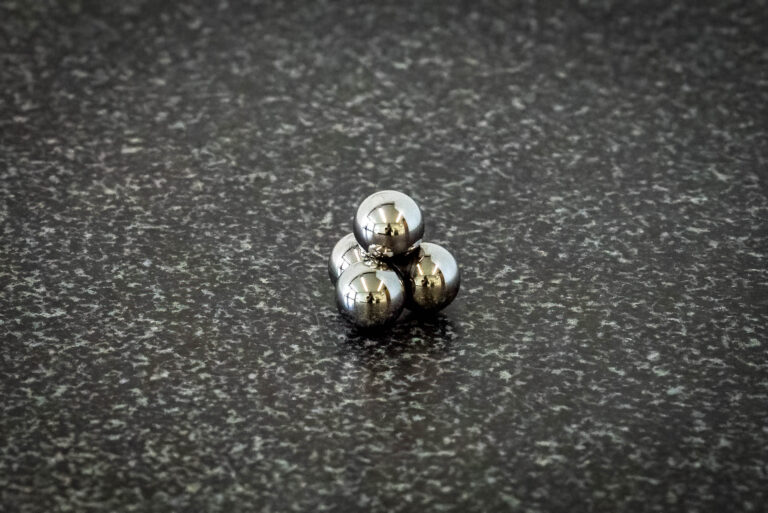
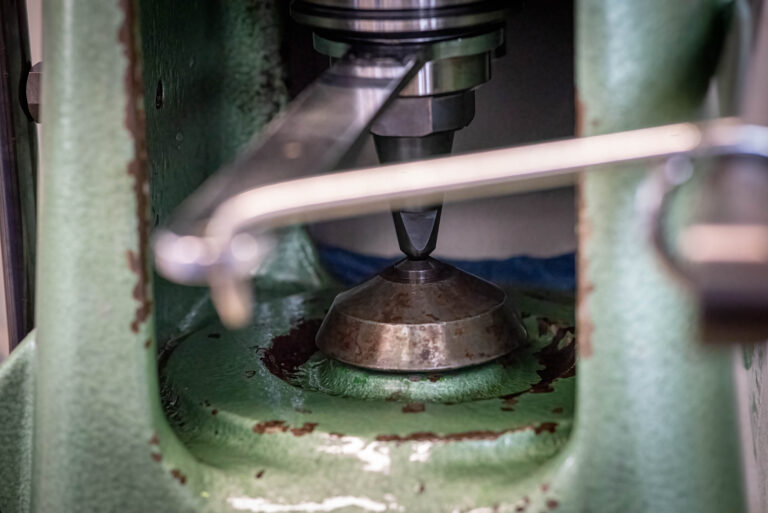
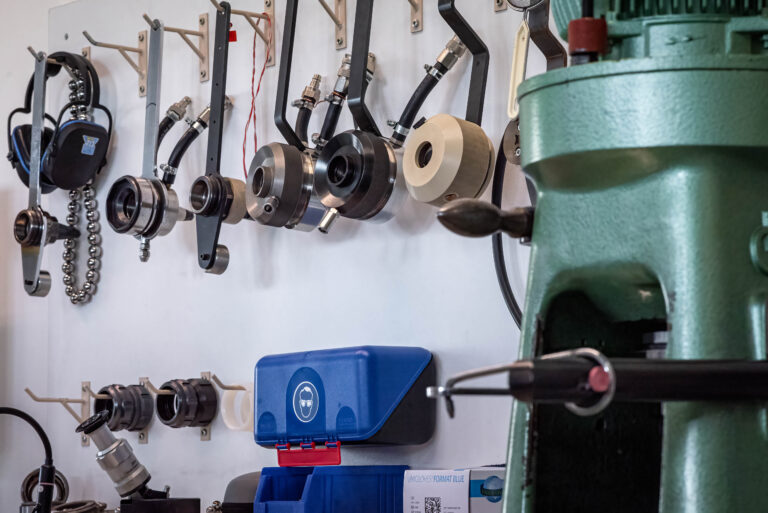

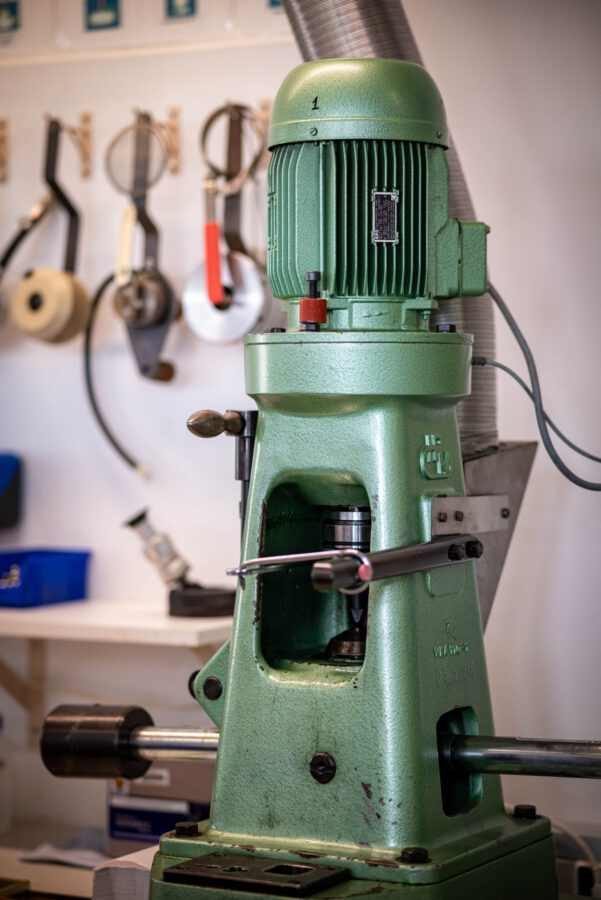 Testing in the Shell Four Ball Tester according to DIN 51 350 is used to determine characteristic values for lubricants with active ingredients that are intended to permit high surface pressure in the mixed friction area between surfaces moving relative to one another (EP additives). In addition, the wear protection behavior (AW behavior) of the lubricants can be tested at lower pressures.
Testing in the Shell Four Ball Tester according to DIN 51 350 is used to determine characteristic values for lubricants with active ingredients that are intended to permit high surface pressure in the mixed friction area between surfaces moving relative to one another (EP additives). In addition, the wear protection behavior (AW behavior) of the lubricants can be tested at lower pressures.
The lubricant is tested in a system of four identical balls consisting of one rotating ball (track ball) sliding on three balls (stationary balls). When testing according to part 2 (oils) and 4 (greases), the test load is increased until the balls are welded together. The procedure according to parts 3 and 5 is carried out at lower loads (150 and 300 N, respectively) and is used to determine the VKA wear characteristics. If required, the frictional torque can be recorded continuously.
The test bench is particularly widespread in the lubricant and additive industry, where it is routinely used for product development and quality control.
A method developed by the company Volkswagen allows statements to be made about protection against pitting (VW standard PV 1444). With a separate shear adapter, the shear strength of polymer-containing lubricants can also be tested in accordance with DIN 51350 Part 6 using a tapered roller bearing.
With the aid of a (nearly) adiabatic test head, it is possible to determine internal and external friction losses in axial deep groove ball bearings (PV 1454). This method is of particular interest for the development and investigation of light-running oils.
The determination of electrical parameters in the Four Ball Tester (similar to the so-called GESA adapter of the University of Kaiserslautern) is currently gaining great importance. Impedance measurement can be used to determine how a lubricant behaves electrically in an axial deep groove ball bearing. Another method investigates at which voltages current passage occurs and thus damage to the rolling bearings.
With a special adapter developed at the institute, almost all plain and roller bearings up to an outside diameter of 80 mm can be tested under axial load. In addition, the contact resistance between the test specimens can be measured and recorded during all tests.
All measurement data is recorded. These adapters and modifications have upgraded the VKA to a very universally applicable modern test instrument.
Friction conditions
Boundary friction, mixed friction and elastohydrodynamics
Contact geometry
Point contact
Movement types
Gliding, rolling
Rotary speed
10 … 5.800 1/min
Load
100 … 12.000 N
Temperature
-20 … 150 °C
DIN 51 350: Prüfung von Schmierstoffen – Prüfung im Vierkugel-Apparat
DIN 51 350/2: Bestimmung der Schweißkraft von flüssigen Schmierstoffen
DIN 51 350/3: Bestimmung von Verschleißkennwerten flüssiger Schmierstoffe
DIN 51 350/4: Bestimmung der Schweißkraft von konsistenten Schmierstoffen
DIN 51 350/5: Bestimmung von Verschleißkennwerten für konsistente Schmierstoffe
DIN 51 350/6: Bestimmung der Scherstabilität von polymerhaltigen Schmierölen
ASTM D 2783-82: Measurement of EP-Properties of Lubricating Fluids
ASTM D 2783-82: Measurement of EP-Properties of Lubricating Grease
ASTM D 4172-82: Wear Preventive Characteristics of Lubricating Fluids
ASTM D 2266-86: Wear Preventive Characteristics of Lubricating Grease
IP 239 / 85: EP-Properties: Friction and Wear Tests for Lubrications
CEC L-45-T-93: Viscosity Shear Stability of Transmission Lubricants
EN ISO 20623:2018: Determination of the extreme pressure (EP) and anti-wear properties of lubricants – Four-ball method (European conditions)
Other tests
- Determination of electrical characteristics in an axial roller bearing in the VKA (NA 062-06-53 AA); so-called “GESA adapter”
- Determination of friction and wear as a function of load, temperature, sliding speed and lubricant
- Determination of the steady-state temperature and frictional torque of tapered roller and thrust ball bearings as a function of load, temperature, sliding speed and lubricant (VW PV 1454)
- Ball-on-three-plates test (BOTP)
- VKA pitting test (VW PV 1444)
- Wear
- Welding force
- Frictional torque
- Lubricant temperature
- Contact resistance
- Impedance (up to 10 MHz)